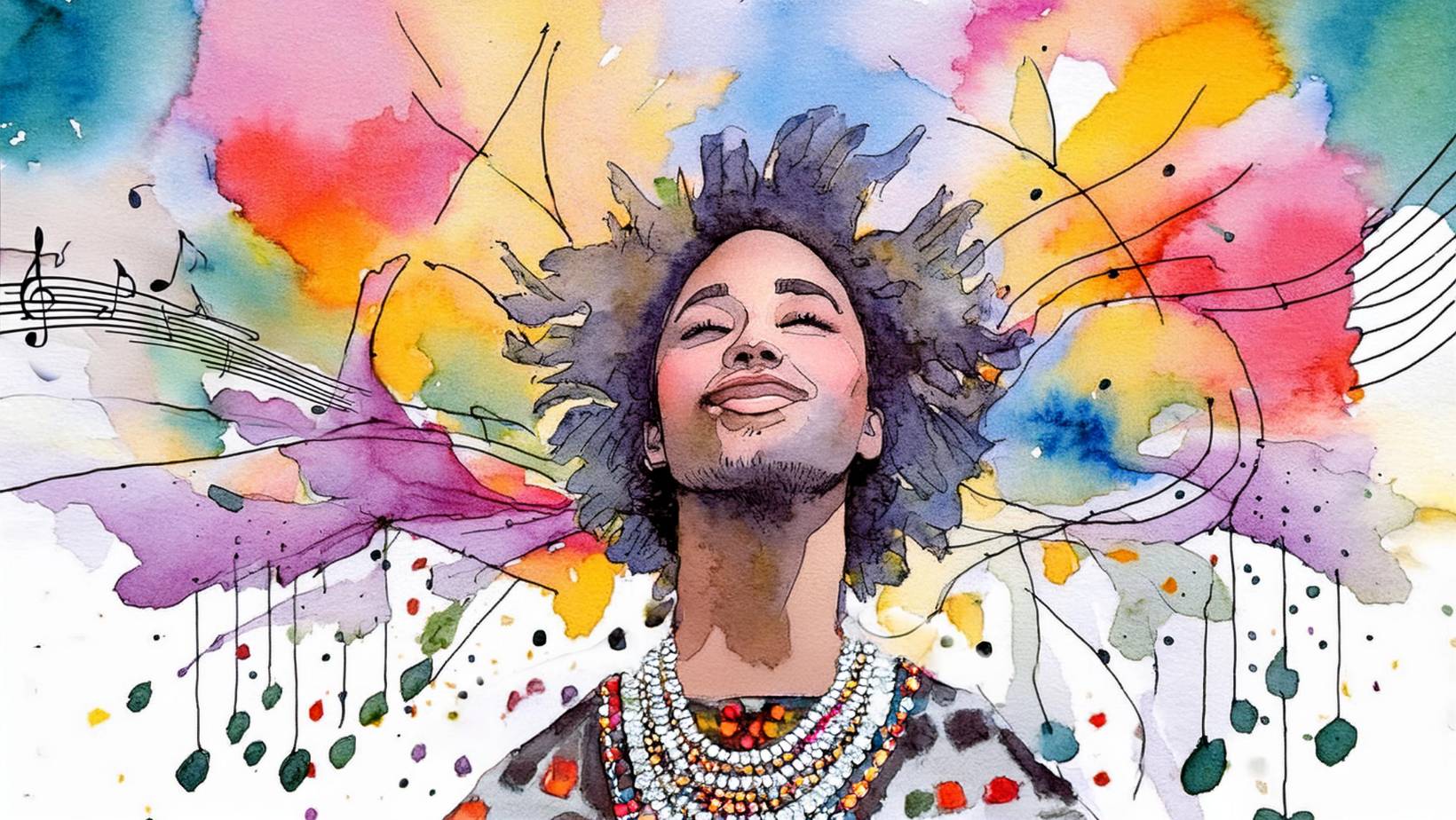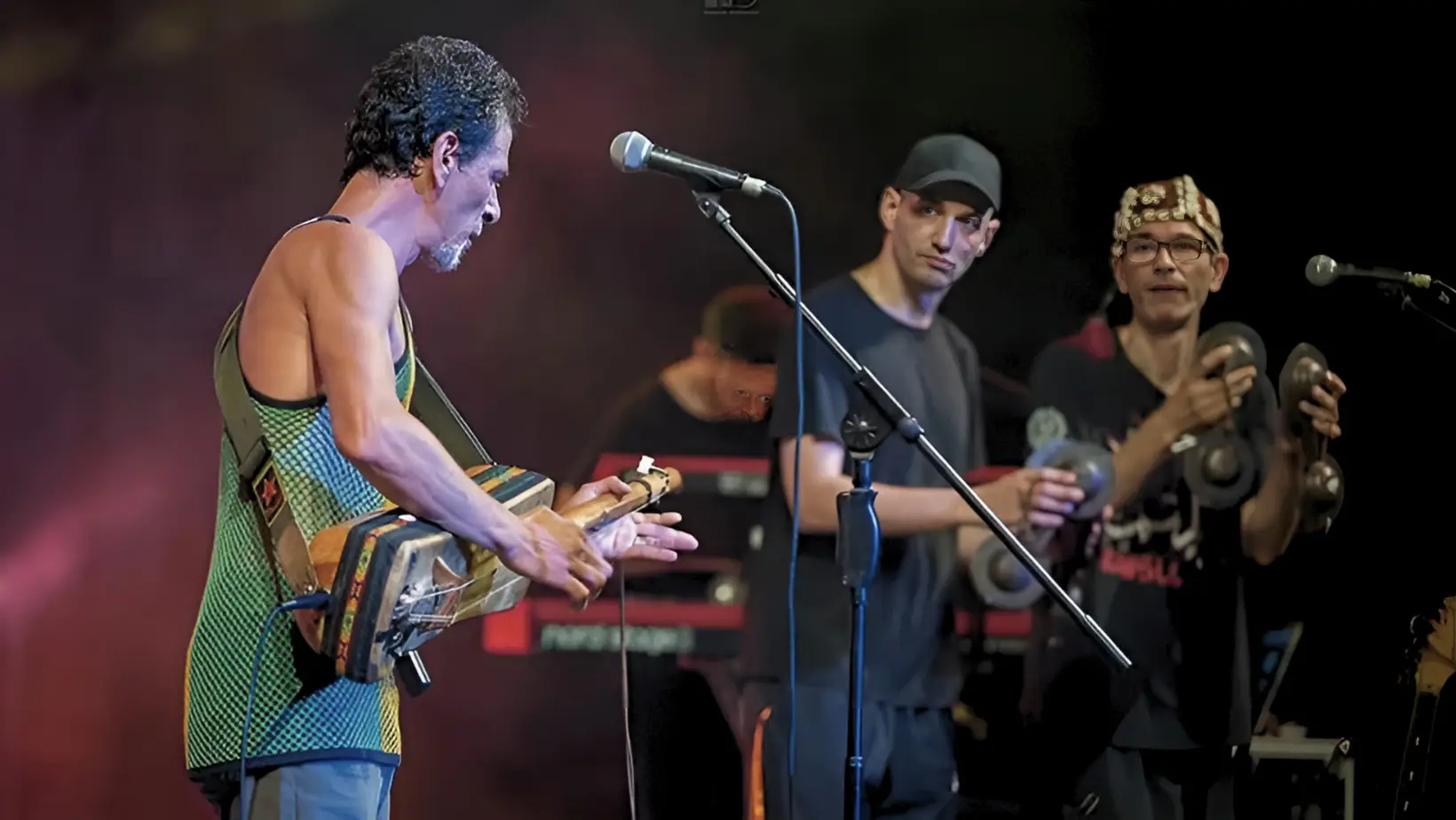Gnawa music has captivated audiences for centuries with its hypnotic rhythms and melodies. Beyond its cultural and spiritual significance, Gnawa music also holds a fascinating place in the realm of neuroscience. This article explores how Gnawa music alters brainwave patterns, inducing trance states that can have profound therapeutic benefits.
Understanding Brainwave Entrainment
What Are Brainwaves?
Brainwaves are electrical impulses in the brain that occur at different frequencies, measured in Hertz (Hz). These frequencies are typically categorized into several types:
- Beta Waves (13-30 Hz): Associated with active thinking, focus, and alertness.
- Alpha Waves (8-13 Hz): Linked to relaxation and calmness.
- Theta Waves (4-8 Hz): Connected with deep relaxation, meditation, and light sleep.
- Delta Waves (0.5-4 Hz): Related to deep sleep and restorative processes.
The Concept of Brainwave Entrainment
Brainwave entrainment occurs when external rhythmic stimuli, such as music, cause the brain’s electrical activity to synchronize with the rhythm. This process can shift brainwave patterns, leading to altered states of consciousness. Gnawa music, with its repetitive and rhythmic structure, is particularly effective at inducing brainwave entrainment.
The Neuroscience Behind Gnawa Music
Rhythmic Complexity and Repetition
Gnawa music features complex polyrhythms and repetitive melodic patterns. These elements play a crucial role in brainwave entrainment by providing a consistent and predictable auditory stimulus that the brain can synchronize with.
Studies have shown that rhythmic auditory stimuli can modulate brainwave activity. For instance, a study published in the Journal of Cognitive Neuroscience found that rhythmic auditory stimulation can enhance alpha and theta brainwave activity, which are associated with relaxation and trance states.
Inducing Trance States
The repetitive rhythms and melodies of Gnawa music can lead to a trance state, characterized by a shift from beta to alpha and theta waves. This state is often described as a meditative or altered state of consciousness.
A study published in Frontiers in Human Neuroscience explored the effects of rhythmic drumming on brainwave activity and found significant increases in theta wave activity, suggesting that rhythmic music can facilitate trance states.
Therapeutic Applications
Reducing Anxiety and Stress
By shifting brainwave patterns to more relaxed states (alpha and theta), Gnawa music can help reduce anxiety and stress. This makes it a valuable tool in music therapy for clients struggling with these issues.
Enhancing Meditation and Mindfulness
The ability of Gnawa music to induce trance states can enhance meditation and mindfulness practices. By facilitating deeper states of relaxation and introspection, Gnawa music can help individuals achieve a more profound meditative experience.
Supporting Trauma Processing
The trance states induced by Gnawa music can also aid in trauma processing. By accessing deeper levels of consciousness, individuals may find it easier to process and release traumatic memories, promoting emotional healing.
The Power of Gnawa Music in Therapy
Gnawa music’s ability to alter brainwave patterns and induce trance states holds significant promise for therapeutic applications. By leveraging the neuroscience of brainwave entrainment, therapists can use Gnawa music to help clients achieve relaxation, reduce anxiety, enhance meditation, and process trauma. As research continues to uncover the scientific underpinnings of Gnawa music’s effects on the brain, its role in music therapy and healing practices is likely to expand.






